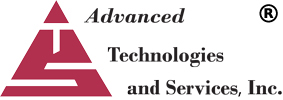USF Safe Harbor is Costing You Money
In our regulatory work, we’re often surprised by how many providers don’t know that they can lower their USAC obligation with a USF Traffic Study to identify their actual Percent of Interstate Usage (PIU) rather than using the FCC’s Safe Harbor rate. Safe Harbor is a standard number that assumes that a pre-determined percent of a provider’s calls (64.9% for VoIP, 37.1% for Wireless) were interstate or international in nature. In our experience, we’ve found that carrier’s actual PIU’s are typically around half of the FCC’s Safe Harbor Percentage.

Universal Service Fund Webinar, September 2023
Our VP of Solutions Engineering Ryan Guthrie partnered with Jonathan Marashlian from the CommLaw Group to discuss the current state of the Universal Service Fund and Traffic Studies. Other topics discussed include;
- The Current State of the USF
- Data Retention and Record Keeping
- Alternative Revenue Allocation Methodology
- Traffic Studies
- Remaining Compliant and Competitive
Different Providers, Same Benefits
While the benefit of traffic studies to reduce USF costs is clear, there is more than one incentive for carriers to complete a traffic study. In every single traffic study we’ve completed, providers saw a decrease in their USF Contribution (seriously, every single one) . Here’s how we’ve seen carriers benefit from them;
- VoIP and Wireless companies have an extremely high safe harbor rate of 64.9%, and 37.1, respectively. In our history of traffic studies, most actual PIU’s don’t even come close to these safe harbor rates.
- De Minimis carriers that are close to the FCC’s threshold use traffic studies to validate that they are indeed de minimis. If smaller providers use the safe harbor rate, there’s a much higher chance that their percent of interstate or international revenue will be over the de minimis threshold.
To be sure that you’ll benefit from a traffic study, we offer a free analysis on a subset of data to get a good idea of how low your actual Percent of Interstate Usage is.
Download USF VoIP Case Study
Friendly, Experienced Professionals
USF Resources
Whats Next for the USF?
Blog
The wheels are turning on USF reform, and recently the FCC took small steps forward by asking Congress for authority to expand the contribution pool. Commissioner Brendan Carr predicts that if nothing is done, the contribution factor can hit 75% within four years, and some experts believe that it could be up to 40% in 2023.
Current Quarter’s Contribution Factor
USAC
“The contribution factor is the percentage of end user revenue that will be contributed to the Universal Service Fund to support the universal service programs, as established by the FCC. The contribution factor changes every quarter.”
USF Traffic Study – Wireless
Case Study
Wireless providers contribute to the Universal Service Fund (USF) with a Safe Harbor rate of 37.1%. Providers have to pay the USF Tax themselves, pass the increase to their customers, or take a closer look at their actual percentage of interstate usage.
